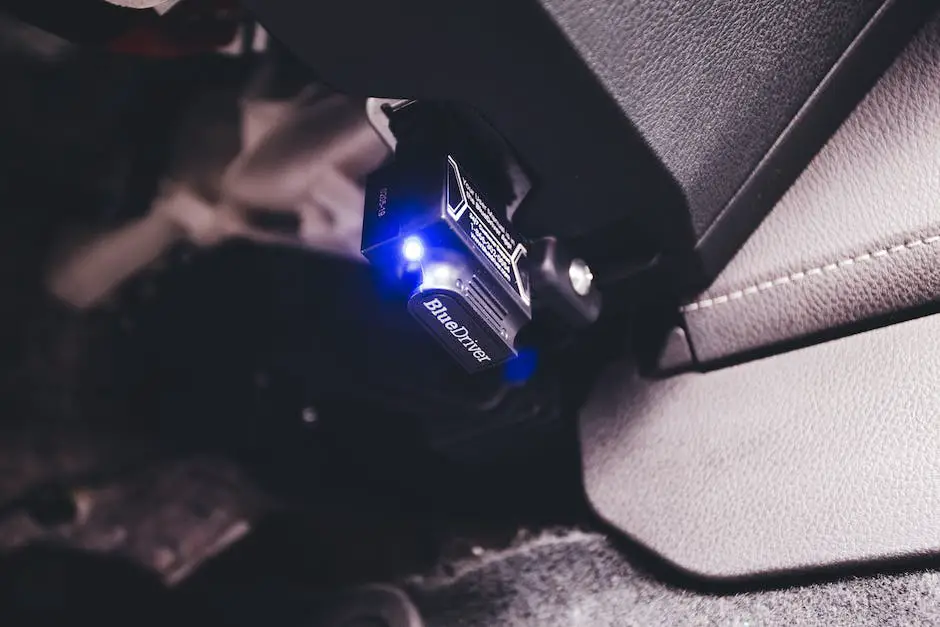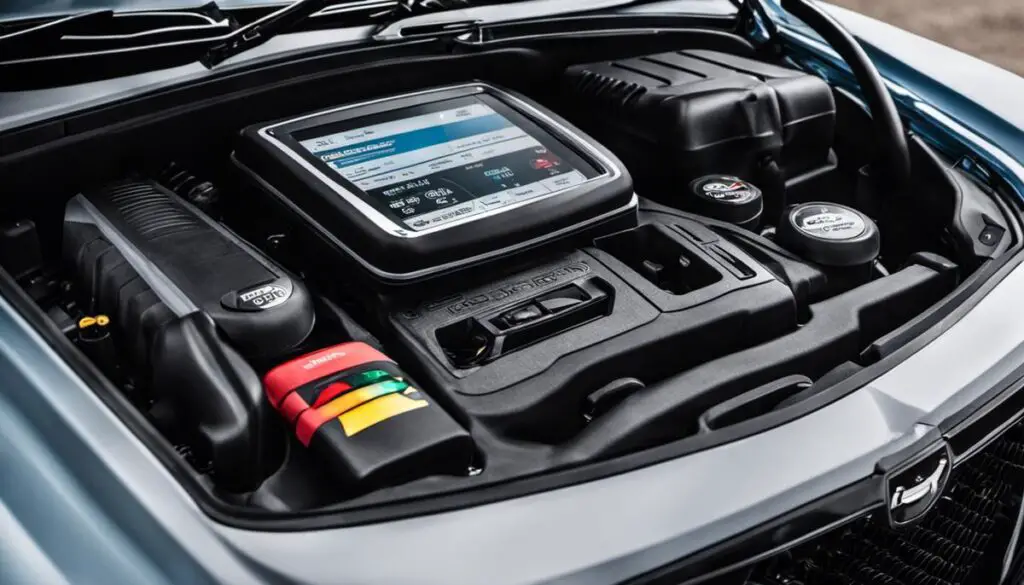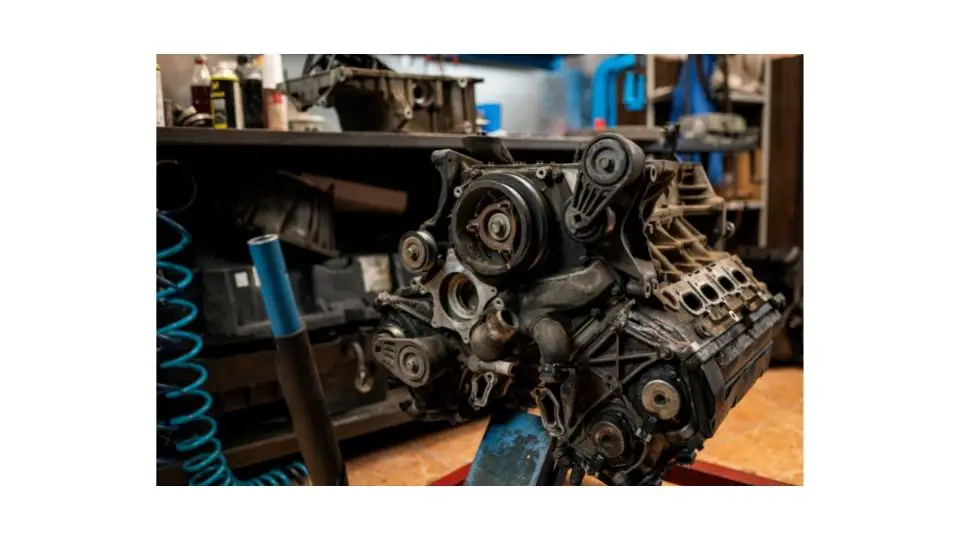In the intricate world of motor vehicle operation and maintenance, On-Board Diagnostics II (OBD-II) codes play a pivotal role in monitoring the health of your vehicle. These intelligently crafted codes provide a diagnostic system for identifying issues, making automobile upkeep a less daunting task for owners. Poured over by mechanics and everyday car owners alike, they highlight potential issues that can otherwise go unnoticed in the daily grind of driving. The focus of our discussion is on one such code – the P0442, a code common in Chevy vehicles, symobolizing an Evaporative Emission Control System Leak.
Introduction to OBD-II codes
Decoding the Tech: Basic Terminologies and Definitions Related to On-Board Diagnostic-II (OBD-II) Codes
Deep in the heart of every modern vehicle rests sophisticated technology called the On-Board Diagnostic system. This article will delve into one of its versions, the On-Board Diagnostic-II (OBD-II). Understanding these terminologies and definitions associated with OBD-II codes can be the key to unlocking a vehicle’s performance potential and troubleshooting woes.
OBD-II is the second iteration of this tech system, superseding the previous OBD-I. It is an enhanced version, standardised across most vehicles manufactured since 1996, providing universal troubleshooting codes. Understanding these codes will greatly aid in identifying and resolving auto issues.
OBD-II Codes:OBD-II codes are alphanumeric codes flashed on a vehicle’s OBD-II scanner to alert the operator about a specific issue within the vehicle system. These codes are displayed when the system’s sensors detect any abnormality, resulting in the “check engine” light on the dashboard.
Powertrain Codes:Powertrain codes lead off with a “P”, followed by a “0” or a “1” and then two other digits. A “0” indicates a universally applicable code, while “1” stands for a manufacturer-specific code. These codes relate to the engine and transmission systems.
Body, Chassis, and Network Codes:These codes are denoted by “B”, “C”, and “U” respectively. They relate to issues concerning systems like brakes, steering, and network communication.
Fault Description:The Fault Description is a brief explanation associated with a particular OBD-II code. It provides an overview of the potential concern, such as “Cylinder 1 Misfire Detected” or “Engine Coolant Temperature Circuit Range/Performance Problem.”
Malfunction Indicator Light (MIL):Meaning engine trouble, the Malfunction Indicator Light (often known as the “check engine” light) illuminates when your vehicle’s OBD-II system detects a problem. MIL triggers the respective DTC (Diagnostic Trouble Code)
Freeze Frame Data:When an OBD-II code is set, the system also captures and stores certain vehicle data – such as engine RPM, vehicle speed and throttle position. This “snapshot” of your vehicle’s condition at the time of the fault is known as Freeze Frame Data, and can be crucial to problem-solving.
Drive Cycle:A Drive Cycle refers to the sequence of conditions (idle, acceleration, cruising, and deceleration) that a vehicle must undergo to set the OBD-II readiness monitors. This helps to clear some OBD-II codes and is critical after fixing detected issues.
Readiness Monitors:These are self-check procedures that the OBD-II system undergoes to ensure specific vehicle operations are performing correctly. Once a drive cycle is completed, these monitors flag the system as “ready”, meaning no detectable issues remain.
Understanding these basic OBD-II terminologies enables drivers and automotive enthusiasts to converse with the language of modern vehicles. Armored with this lexicon, troubleshooting vehicle malfunctions becomes less daunting, while preventive maintenance turns more feasible and efficient. Let’s keep that check engine light off and the open road ahead exhilaratingly clear!

Understanding code P0442
Unraveling the Mysteries Behind Code P0442 in Chevy Vehicles
Automobile technology is an ever-evolving field, keeping all tech enthusiasts on their toes. Moving beyond the basics of OBD-II codes and powertrain nuances, a Chevy vehicle unique code – P0442 – is under the spotlight.
So what triggers code P0442 in a Chevy, and what does it signify? The P0442 is a diagnostic trouble code (DTC) that indicates a small leak has been detected in the Evaporative Emission Control (EVAP) system. The EVAP system is designed to stop the harmful fuel vapors from the fuel tank from being released into the atmosphere, a significant contributor to air pollution.
The triggering of code P0442 is a clear sign that the system has detected a leak ranging between 0.02 inches to 0.04 inches. But what’s responsible for this indication? It’s usually the outcome of three typical conditions. Firstly, the filling cap might not be appropriately tightened, causing the vapors to escape. Secondly, a cracking or disconnection of hoses and tubes attached to the EVAP can also be the issue. Lastly, a faulty, defective, or damaged canister purge valve or vent valve can trigger this code.
Chevy’s sophisticated technology has been optimized to identify these irregularities and bring them to the user’s attention so that immediate corrective action can be taken.
Solving P0442 is manageable, even for those who are not mechanics. It primarily involves checking the gas cap for any damages and ensuring it’s tightly secured. If this doesn’t resolve the issue, a careful inspection for broken or disconnected hoses might be required. One might also need to check the purge and vent valves’ functioning.
For tech wizards who love the nitty-gritty of technology and take pride in applying tech solutions to everyday issues, Chevrolet’s system has been engineered with these diagnostic tools to guide in identifying and resolving such problems. Despite being complex, advanced vehicles like the Chevrolet give users a leveled-up, hands-on experience in troubleshooting, narrowing down the root cause of problems, and fixing them in real-time without any delays.
Remember, while diving into the intricacies of these systems is fascinating, and technology can empower us enormously, safety should always be the top priority. Therefore, if the problem persists or the repair process is out of your comfort zone, professional help from a certified mechanic is highly recommended. Technology is there to simplify life, not make it risky.

Troubleshooting and repairing code P0442
Digging Deeper into Diagnosing and Repairing Issues Stemming from Code P0442
So, you’ve encountered the dreaded code P0442 in your Chevy vehicle. This powertrain-related error code signifies an issue with the evaporative emission control system. You’re here to gain a deeper understanding of the technicalities, the solution, and how to prevent it from reoccurring. Let’s dive in.
Honing in on P0442: Beyond the Basics
The advent of OBD-II Codes and Powertrain Codes brought along a specific categorization for emission control issues: code P0442. This code indicates a small leak in the evaporative emission control system. It’s important not to overlook this error, as even a small leak can wreak havoc on your vehicle’s optimal functioning and fuel efficiency.
The Art of Diagnosis: Identifying and Rectifying the Root Cause
-
Verifying the Gas Cap: One of the simplest and most common reasons for P0442 is a loose, damaged, or misplaced gas cap. Get in there and make sure the cap is tight and in good condition. Remember, something as small as a loose gas cap could wreak havoc on your evaporation control system.
-
Hose Inspection: Pop open the hood and dive into the maze of hoses. They can become disconnected or crack over time, leading to small leaks. Each hose must be robustly connected and show no sign of damage.
-
Checking Valves: Faulty valves can also lead to code P0442. A thorough check will reveal if any are misbehaving.
-
Canister Assessment: An often-overlooked component in this scenario is the canister itself. Damage here could lead to leaks, triggering this notorious code.
-
Leak Detection Pump: Have you ruled out the previous factors? It’s time to check the leak detection pump. Although it’s not a common issue, they can fail and cause the dreaded P442.
Incorporating Preventive Measures: Steering Clear of P0442
To avoid an unpleasant future rendezvous with this code, periodic checks are essential. Ensuring the appropriate tightening of the gas cap, regular inspections of hoses and valves, and maintaining overall engine health can reduce the probability of encountering this issue.
Finally, the implementation of Chevy’s specialized diagnostic tools can empower you with significantly improved troubleshooting capabilities.
Closing Thoughts: Empowered Yet Cautious
While it’s great to be in the driving seat of problem-solving, bear in mind that tackling automotive issues involves a degree of risk. If the issue persists after your thorough campaign against P0442 or you don’t feel comfortable taking on the task, do not hesitate to seek professional assistance.
In the battle of Man vs. Code, take solace in the vast technical support available. Only through understanding the problem and its systematic solution can technology truly serve us. Be smart, be diligent, and drive safe.

Keeping the P0442 code in perspective, the knowledge behind decoding this OBD-II code isn’t merely technological jargon for mechanics. Rather, it’s a critical tool for Chevy owners to ensure the longevity of their vehicle and to mitigate costly repairs down the line. By understanding the meaning of this code, learning what triggers it, and knowing how to troubleshoot and repair, you’re empowering yourself to keep your Chevy in the best shape possible. The more informed you are, the better decisions you can make for your vehicle, and by extension, the more you can enjoy the freedom and independence that comes with smooth, uninterrupted driving.

Tomas is a retired Chevy Auto Technician that brings decades of hands-on experience and expertise to the table. He’s also a father to two incredible daughters. He enjoys using his knowledge and experience to help you solve and find reliable information on Chevrolet vehicles. Whether it’s troubleshooting engine problems or providing tips for maintenance, Thomas is committed to helping Chevy owners keep their vehicles running smoothly and safely.



